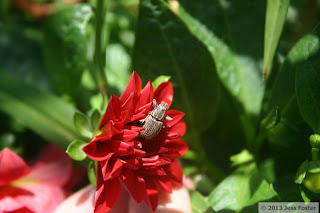Most species of Naupactus reproduce by parthenogenesis, a form of asexual reproduction in which the egg cells are not fertilized. Thus, a species can be composed entirely of females and still propagate. For instance, in N. cervinus, "Each generation is composed of only females (thelytokous) that come from the same mother. According to Benjamin Normark (1996), parthenogenetic weevils are apomictic; meiosis does not occur and all female offspring are genetically identical to their mothers, except for mutations. Traditionally, hybridization and polyploidy were the main explanations for the origin of asexuality in weevils; however, Marcela Rodriguero, et al. (2010) suggests another possible explanation: the parthenogenisis inductor bacterium Wolbachia pipientis. The endosymbiont bacterial genome can produce drastic consequences on the evolution of its host species, such as extinction or sex role reversal."
References:
http://bugguide.net/node/view/30841 (Naupactus)
http://bugguide.net/node/view/355601 (N. peregrinus)
http://pubs.ext.vt.edu/3104/3104-1571/3104-1571.html
http://www.cotton.ncsu.edu/ccn/2001/ccn-01-7a.htm (on cotton in NC)
http://naldc.nal.usda.gov/download/IND43894275/PDF
http://www.entsoc.org/PDF/Pubs/Periodicals/JEE/JEETOCS/PDF/ec039800708.pdf (Management of White-fringed Beetle Grub Damage to Sweet Potato with Adulticide Treatments)
http://www.forestryimages.org/browse/subinfo.cfm?sub=11523
http://entnemdept.ufl.edu/creatures/field/beetles/whitefringed_beetles.htm
http://www.ncbi.nlm.nih.gov/pubmed/18040867 (New Data on the Cytology of Parthenogenetic Weevils)
http://waynesword.palomar.edu/lmexer2a.htm (Apomixis: Parthenogenesis & Agamospermy)
http://www.nzpps.org/journal/50/nzpp_503270.pdf (Genetic Comparison Of White-fringed Weevil
Species and Populations by RAPD-PCR)






No comments:
Post a Comment